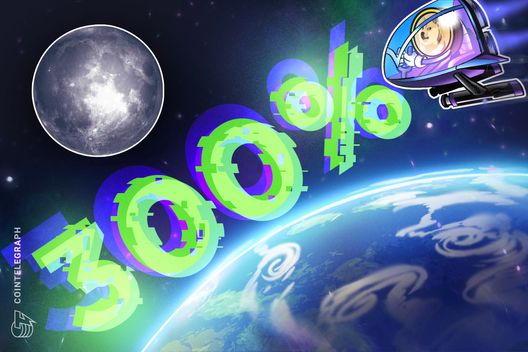Last week, Ethereum (ETH) price fell back to the Initial Coin Offering (ICO) level of 2017. At that time, Ethereum was just a whitepaper and token, and the market seems to be indifferent to the 7.5-year progress of the Ethereum developer ecosystem compared to today's situation with numerous practical applications.
A bigger issue is that ETH needs a new narrative, a clear reason to attract people to buy the token. Let's analyze the common narratives of ETH and explore why they are no longer effective.
1. "ETH is a leveraged beta of Bitcoin (BTC)."
This was indeed true in past bull market cycles, with Altcoins typically outperforming BTC, and blue-chip Altcoins serving as leveraged beta. Whenever BTC performed well, investors would increase risk exposure to gain better returns in Altcoins.
This time is different. In January 2024, the launch of Bitcoin ETFs brought a new paradigm shift. Nearly $100 billion flowed into Bitcoin ETFs, which now collectively hold 5.7% of BTC supply. In contrast, Ethereum ETFs attracted only $5 billion in inflows. Unlike previous cycles, large amounts of capital entering the cryptocurrency market, especially from major institutions, now only flow into BTC and do not spread to other market segments. BTC will always have natural demand from new funds seeking crypto exposure, but it's unclear whether other assets have similar demand.

The second-order effect of new funds not entering Altcoins is that we face a zero-sum speculative capital pool, which rotates between different "casinos". This is evident in price trends in the months after elections, with speculative funds moving from Solana's AI agent meme coins to Hyperliquid, then back to $TRUMP and $MELANIA. Without economic growth, crypto tribalism competing for zero-sum attention accelerates this rotation.
Another second-order effect of funds not entering Altcoins is the damage to the venture capital market. The best-case scenario for Token Generation Events (TGE) is infrastructure projects with financing caps of billions of dollars, with smaller Total Addressable Markets (TAM) for other project categories. Due to capital oversupply relative to founder talent, private round valuations have not decreased. As a result, crypto venture capital returns are being compressed.
2. "ETH is ultrasound money."
This is no longer true. In April 2024, ETH supply began to reverse and increase again. In February 2025, ETH became inflationary since the merge. Therefore, the argument that ETH is harder money than BTC is no longer valid.
The ultrasound money argument is also somewhat moderate. Newcomers to crypto will accept the scarcity narrative of "BTC is digital gold" without understanding the technical details of EIP-1559 or which is more deflationary between BTC and ETH.

3. "ETH is digital oil."
The problem with this framework is that ETH would thus trade like a commodity, showing sideways and range-bound fluctuations. Commodity value is based on market supply and demand, not as a long-term growth asset for buy and hold. To illustrate this, below are two charts comparing oil and S&P 500 index performance over the past decade.


Over the past decade, oil has mostly traded within a range, with two exceptions: 1) Early 2015, when US oil supply was released due to advances in hydraulic fracturing technology; 2) COVID crash in early 2020.
Using the "digital oil" framework, if ETH re-enters the market due to inflation without marginal buying demand, the price will drop.
4. "ETH is the global settlement layer."
Ethereum's long-term scaling roadmap has an inherent contradiction between two goals: 1) Scaling will be pushed to Layer 2 (L2), with Ethereum becoming the settlement layer; 2) L2 economic activity will accumulate value for ETH. When EIP-4844 significantly reduces the cost of publishing transaction data to Layer 1 (L1), this improves L2 scalability but also reduces Ethereum's income.
A bigger issue is that when L2s launch their own tokens, they become somewhat "parasitic" to ETH. L2s have strong economic incentives to accumulate value to their own tokens rather than ETH. Therefore, except for technical differences in consensus mechanisms, L2s almost behave like competing L1s.
This leads to decoupling of EVM (Ethereum Virtual Machine) adoption from ETH value accumulation. Ethereum's historically greatest defense was its development tool ecosystem around EVM - debuggers, fuzzing tools, boilerplate contracts, etc. - built through years of open-source development. For new developers, building on EVM is much easier than building on non-EVM chains without such a robust development infrastructure. As EVM decouples from ETH, EVM adoption can continue to grow as new L2s like MegaETH and new L1s like Berachain and Monad leverage the EVM ecosystem, but value accumulation returns to their native tokens instead of ETH.
5. "ETH has the most economic activity of any chain."
A scenario might emerge where stablecoin Total Value Locked (TVL) reaches an all-time high, decentralized exchange (DEX) trading volume hits an all-time high, and other economic activity indicators peak on Ethereum, but ETH price does not reach an all-time high due to Price/Earnings (P/E) multiple compression. In this case, ETH trading would be more similar to tech stocks like Tesla (TSLA, 97x expected P/E) or NVIDIA (NVDA, 24x expected P/E).
At current annualized profits, ETH would need a 300x P/E multiple to reach its all-time high again without any monetary premium. Therefore, P/E multiple compression still poses significant downside risk.
What happens to ETH next?
Perhaps ETH will rise due to mean reversion, or continue to perform poorly for the reasons mentioned above.
But before that, ETH needs a new narrative.
Welcome to join BlockBeats official community:
Telegram Subscription Group: https://t.me/theblockbeats
Telegram Discussion Group: https://t.me/BlockBeats_App
Twitter Official Account: https://twitter.com/BlockBeatsAsia







